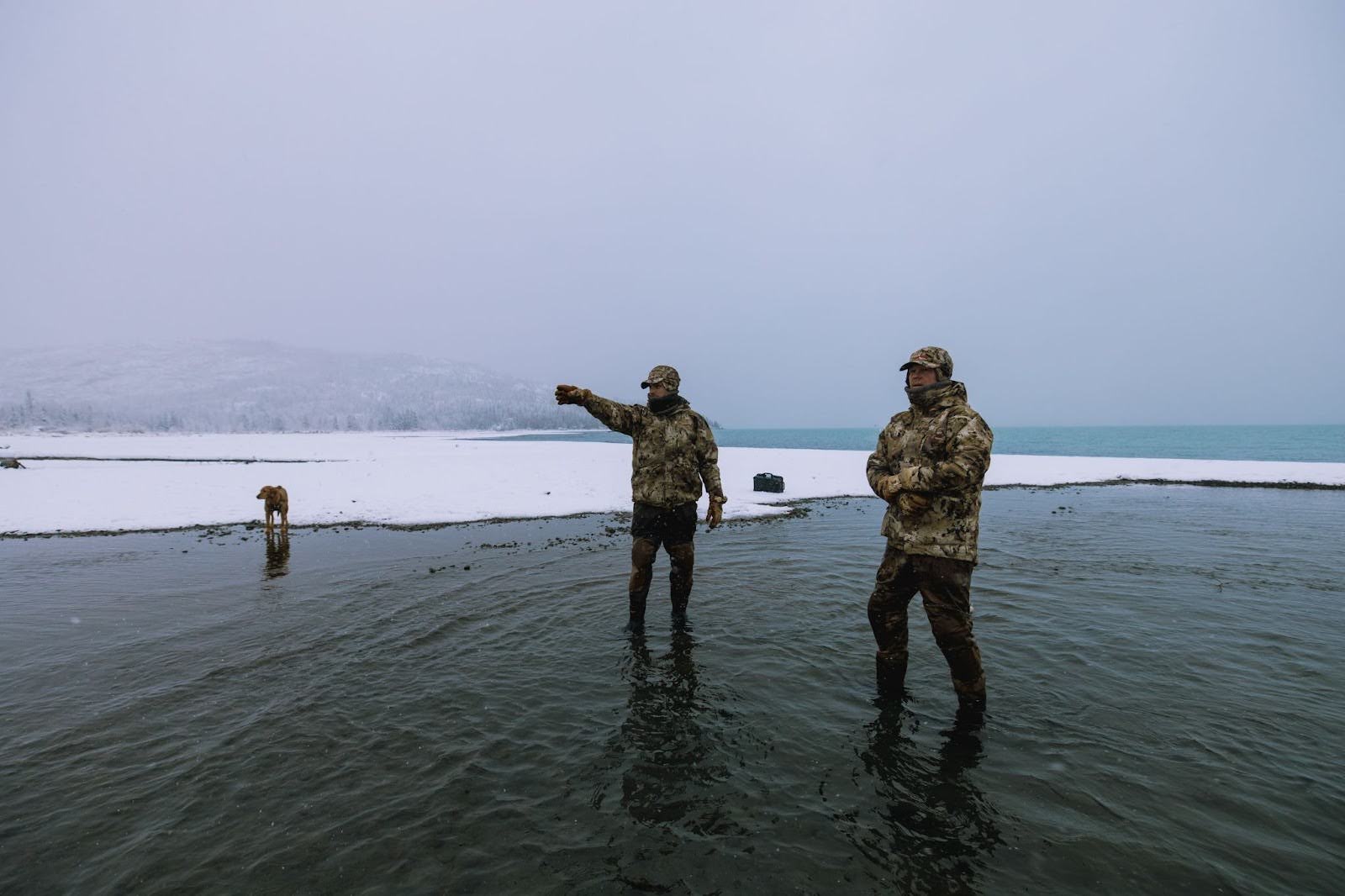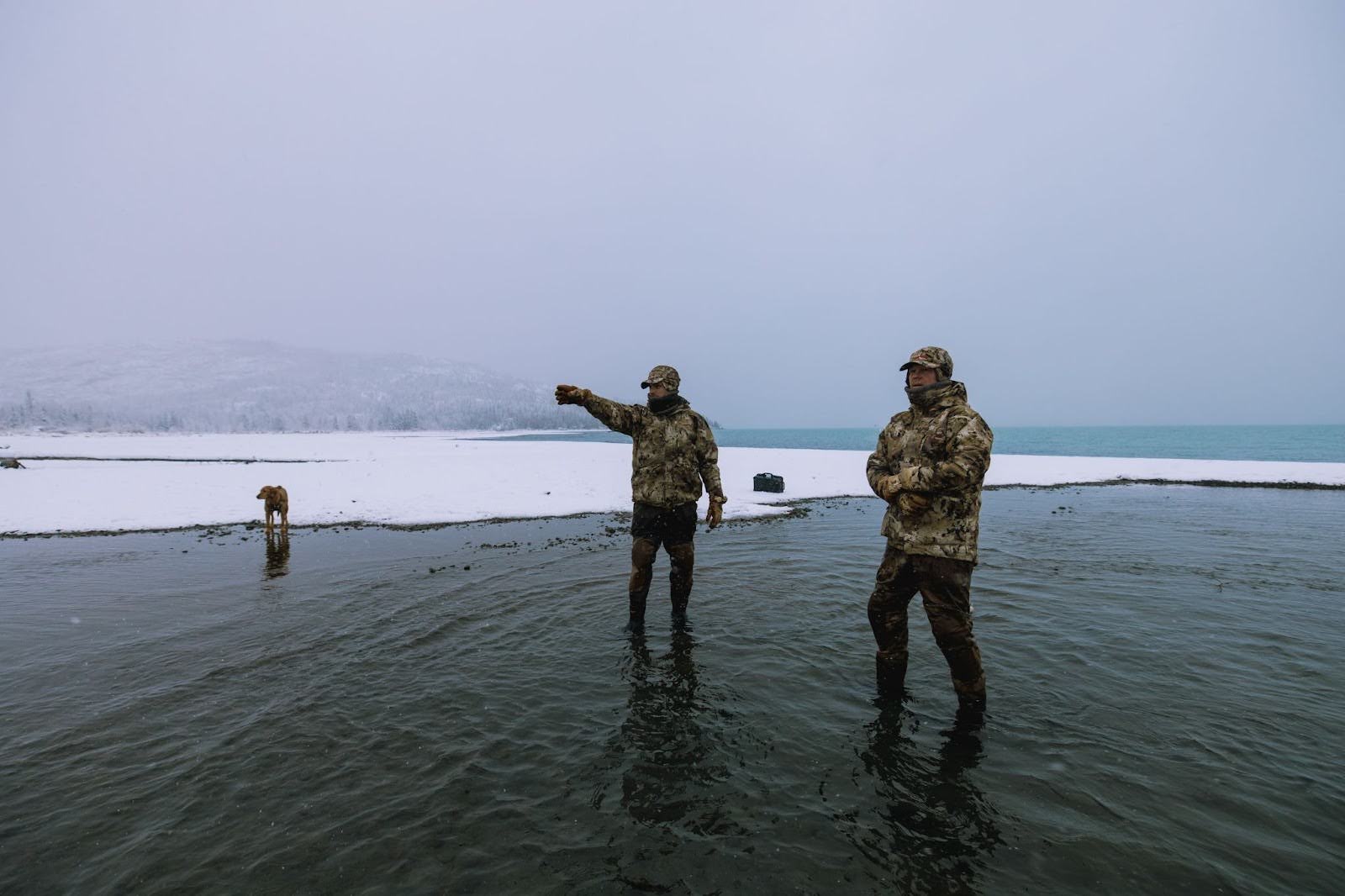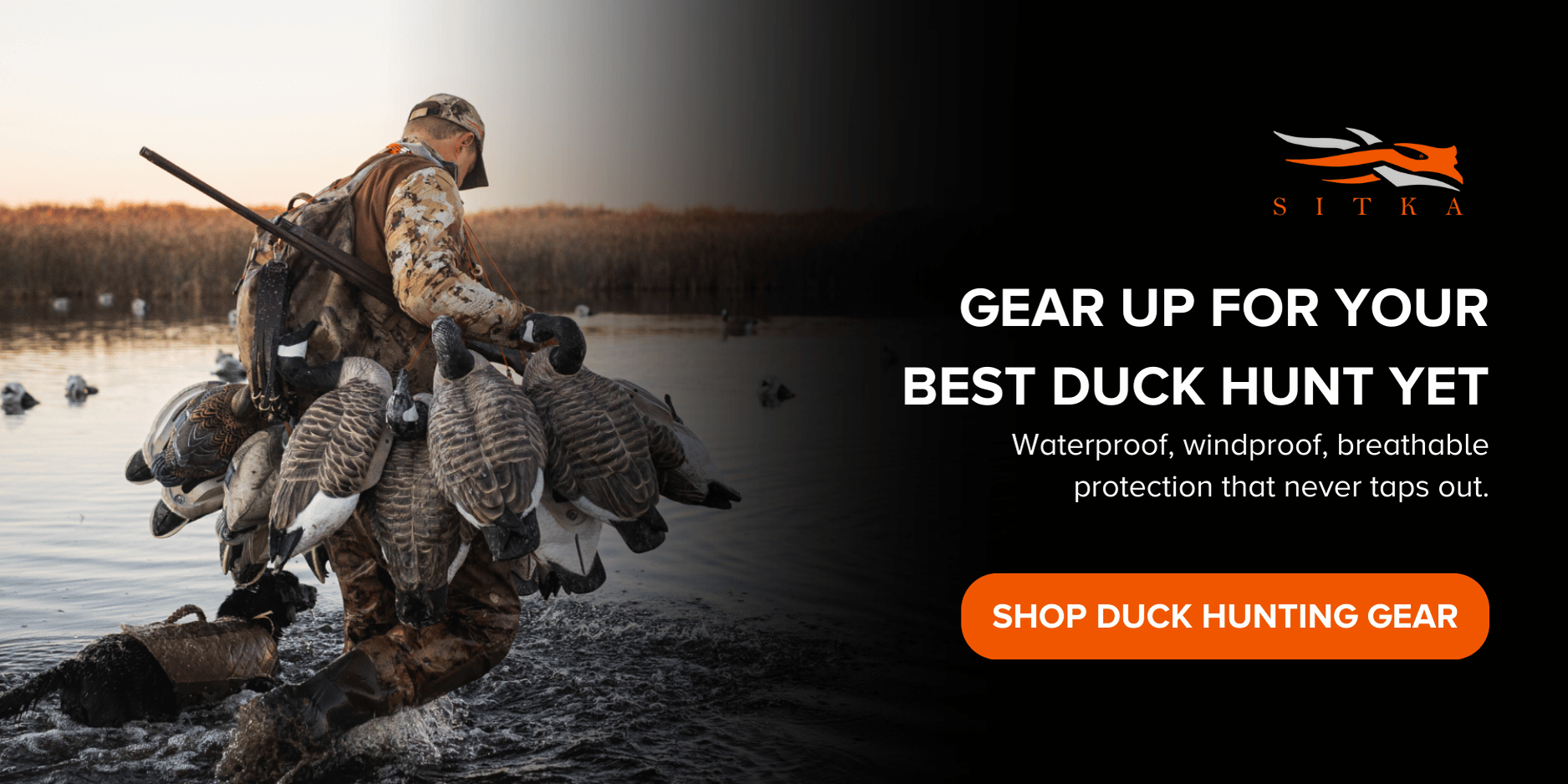Joe Fields | 7.31.2025
Hunting Bibs vs Waders: Differences & Which is Best
Hunting Bibs vs Waders: Differences & Which Is Best
As you prepare for your upcoming hunt, you might not know whether to pack hunting bibs vs. waders—after all, they’re both useful in multiple hunting scenarios.
This guide is here to help. Below, we’ll explore the pros and cons of both, describe key differences, and teach you how to build the perfect kit for your next hunt.
What Are Hunting Bibs?
Hunting bibs are a must for most hunters. They’re:
Comfortable – Made to move and flex, bibs are the perfect bottom outerwear for hunting.
Warm – While lightweight bibs certainly exist, the majority are designed for colder weather.
Layerable – Knowing what to wear under hunting bibs for the most comfortable hunts is essential. Bibs are designed to be worn on top of other hunting clothes: base layers, thick pants, or regular denim.
Bibs are ideal for cold, dry, or slightly muddy environments. However, they’re not a good match for deep water.
When it comes to what to wear duck hunting, where you plan to wade up to your knees, bibs aren’t the right call. Since they don’t have attached boots like waders, they aren’t ideal for extensive, constant wet conditions. Bibs are made to handle the occasional splash—not full-on wading.
What Are Hunting Waders?
Speaking of wading, let’s turn to waders: hunting gear designed for marshes, deep mud, and coastal hunts. Waders are like bibs with an extra accessory: built-in, waterproof boots.
The pros? Duck hunting waders provide complete waterproof protection—often up to your chest. They’re the ideal gear for marshy wood duck hunts, chasing divers, and even some kinds of fishing.
The cons? Waders are:
Heavier than bibs – With built-in boots and waterproof materials, waders can be weighty.
Less flexible than bibs – While waders have some flex, they’re designed to withstand the most rugged environments—so, their robust construction can make them a little harder to move in than bibs.
Key Differences Between Hunting Bibs and Waders
Hunting bibs vs. waders—what are the key differences to consider before packing (or buying) a pair?
Design and construction – Bibs and waders are both overall-style pants, but waders typically provide more coverage and have built-in footwear: hardy, waterproof boots.
Best use cases – Bibs are best for dry field hunting and cold weather—think dove, turkey, and big game hunts. Waders are designed for waterfowl hunting when wetland navigation and shallow water retrieval are a must (even if you’ve got a trusty hunting dog by your side).
Costs and maintenance – On average, waders generally cost more than bibs. And, depending on your maintenance habits, bibs might last longer. However, you can extend the life of most types of waders by storing them flat after drying (to relieve pressure on the boot seams) and patching any pinholes ASAP.
How to Choose the Right Gear for Your Hunting Needs
So, which should you choose—waders or bibs? Let’s consider a few factors.
Environmental Considerations
If you’re planning on wading during your hunt or crossing a body of water (like a marsh or river) to get to your stand, waders are a must—no question.
If you’re pulling out all the stops for a weeklong hunt and the forecast is calling for rain, waders might not be a bad idea. While they’ll have some mobility impacts, they’ll likely improve your quality of life in heavy rain.
For dry hunts, light rain, or cold weather, bibs are likely your best bet—but consider opting for a waterproof pair for extra protection.
Personal Comfort and Mobility
As you build your kit, you also want to balance:
Warmth – While you can layer under both bibs and waders, bibs are typically built with more insulating features (like down).
Flexibility – For stalking or long hikes to the blind, waders aren’t the best choice; they’re more ideal for relatively static hunting in a duck blind or a boat.
Ease of use – At the end of the day, both bibs and waders are user-friendly: don some base layers, pop on your bibs or waders, and hit the road. That said, waders can be slightly more maintenance-intensive—they need to be stored properly, worn often enough to prevent dry rot, and patched on occasion.
Recommendations for New Hunters
If you’re brand-new to hunting, this is a lot to think about. So, let’s cut to the chase:
If you’re duck hunting, buy hunting waders – If you’re planning on going all-in on waterfowl hunting gear, you need waders. Tucking bibs into tall rubber boots just isn’t going to cut it—and you’ll understand why the first time your retriever can’t find a duck that landed a little too far from the blind.
If you’re skipping waterfowl, buy hunting bibs – For turkey, deer, moose, hog, or upland bird hunting, bibs are your outerwear of choice. To make the most of your purchase, spring for a waterproof pair for extra protection from the elements.
If you’re a versatile hunter, buy both – If you’re planning on hunting multiple species in your area (including waterfowl), you might need to buy both bibs and waders. After all, hunting is a gear-intensive sport, and it’s worth investing in the right tools. If you’re still unsure, weigh in other options like hunting bibs vs pants to make the best choice.
Elevate Your Hunts with SITKA Gear Bibs and Waders
One last tip: If you’re in the market for bibs or waders, focus on value. Bibs and waders won’t last forever, but you can ensure peak longevity with well-constructed, purpose-built, and high-quality outerwear.
At SITKA, that’s our specialty: warm, mobility-friendly, low-bulk performance hunting gear for the discerning hunter. Looking for waders and bibs built to last? Our collection can deliver.
Explore our waders and bibs today.
Sources:
Fightmaster Fly Fishing. How Stuff Works: Waders.


